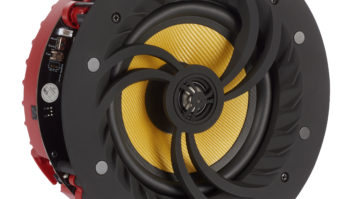Philips plans to take distributed-audio systems into the plug-and-play mainstream at January’s CES, where it will launch a system that distributes music wirelessly from a central HDD music server to multiple amplified one-piece minisystem-style clients.
Philips said the system, called the Wireless Audio System WACS700, will be the lowest priced wireless audio-distribution system announced to date when it ships in April. Philips didn’t release a price, but Yamaha prices its 80GB MusicCAST server at a suggested $2,200 and its amplified clients, which look like executive-style shelf systems, at $599 each. Sonos’ planned system, which uses a PC as the central server, consists of a $399-everyday handheld wireless controller and a $499 amplified ZonePlayer, which can be connected to any pair of speakers. Sonos delayed shipment until mid-January 2005 from the fourth quarter of 2004 to fine tune the system, the company said.
The Philips system consists of a compact, HDD-equipped stand-mount one-piece minisystem with built-in amplification and speakers. Music is distributed via wireless 802.11b from the HDD to multiple clients, which are cosmetically similar to the server. The number of zones that can play different songs simultaneously wasn’t released, nor was the capacity of the HDD or the power output. However, the client and servers feature a new type of flat-panel membrane speaker to deliver mids and highs and maintain a slim form factor. The server also features rear-firing cone woofers. The woofers are lacking in the clients, but they and the server feature a subwoofer output for an optional subwoofer.
Consumers can rip CDs in the server’s CD drive or transfer songs from a PC via USB 2.0. Parental controls are also included in each server and client. Music is stored in MP3 format, and the device will download metadata from the CDDB database but not stream Internet radio. Each server and client comes with IR remote to select songs and control the devices.
The system uses Microsoft’s UPnP for automatic device and feature recognition and user interface.
In other developments, the company plans its first Pronto remote equipped with both 802.11b and IR wireless. A new Nike/Philips flash-memory music portable is also planned.
The RSC9800 Pronto remote, due in April or May, features touch screen and hard buttons. It’s also built on UPnP to control any UPnP- and 802.11b/g-equipped Philips product. With it, consumers can view digital images stores on a networked PC and send the images to Philips flat-panel TVs equipped with 802.11b/g either built in or with an included dongle. It will also control any Philips product equipped with 802.11b/g and UPnP, including the planned distributed-audio system. The remote featured embedded IR database and IR code-learning capability.












